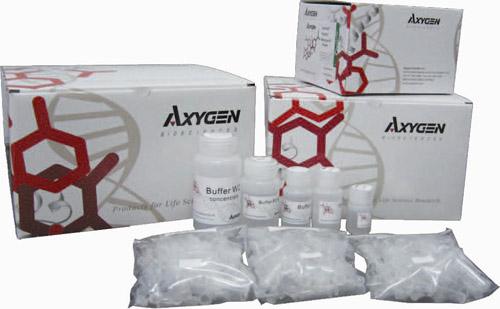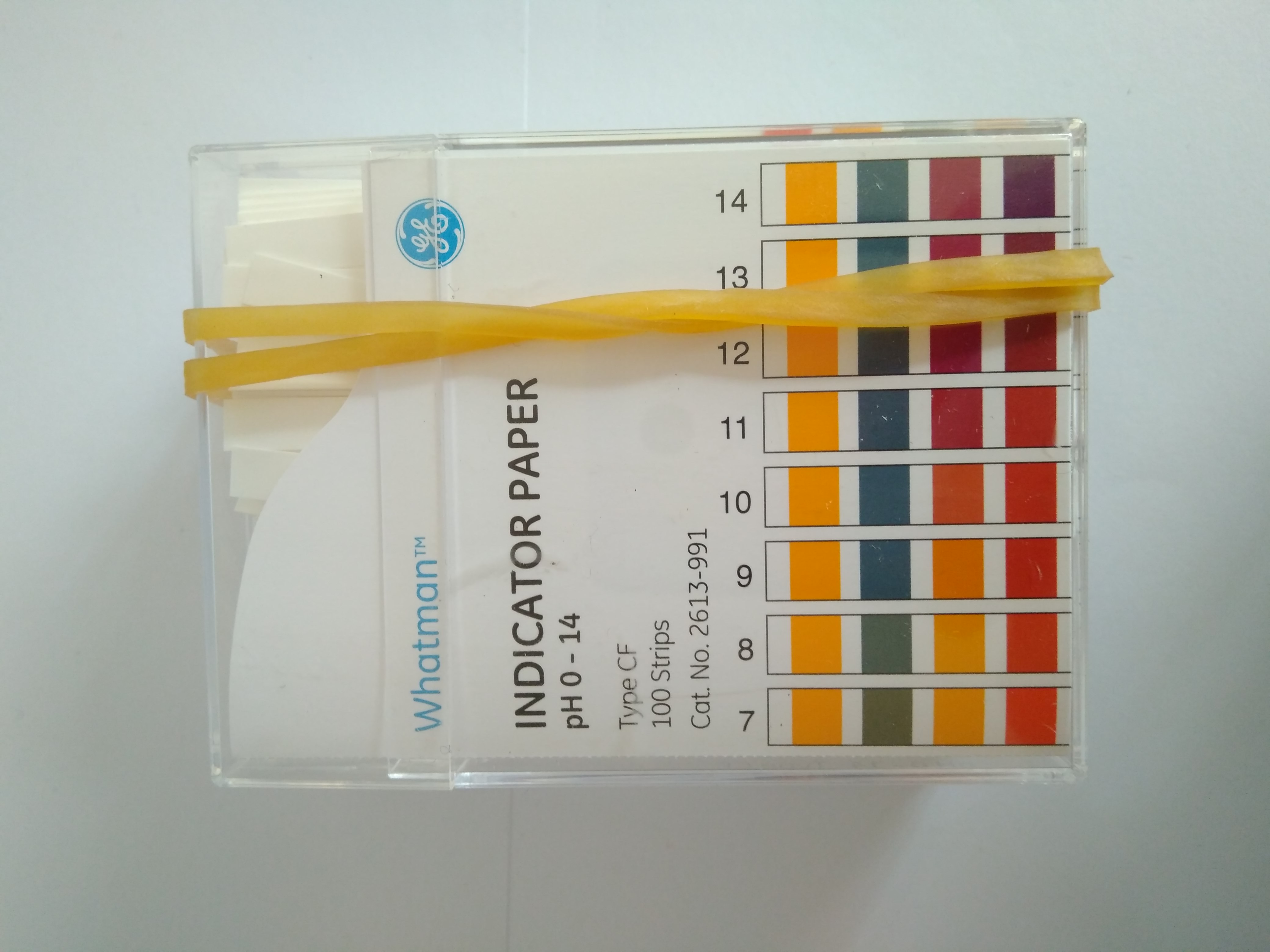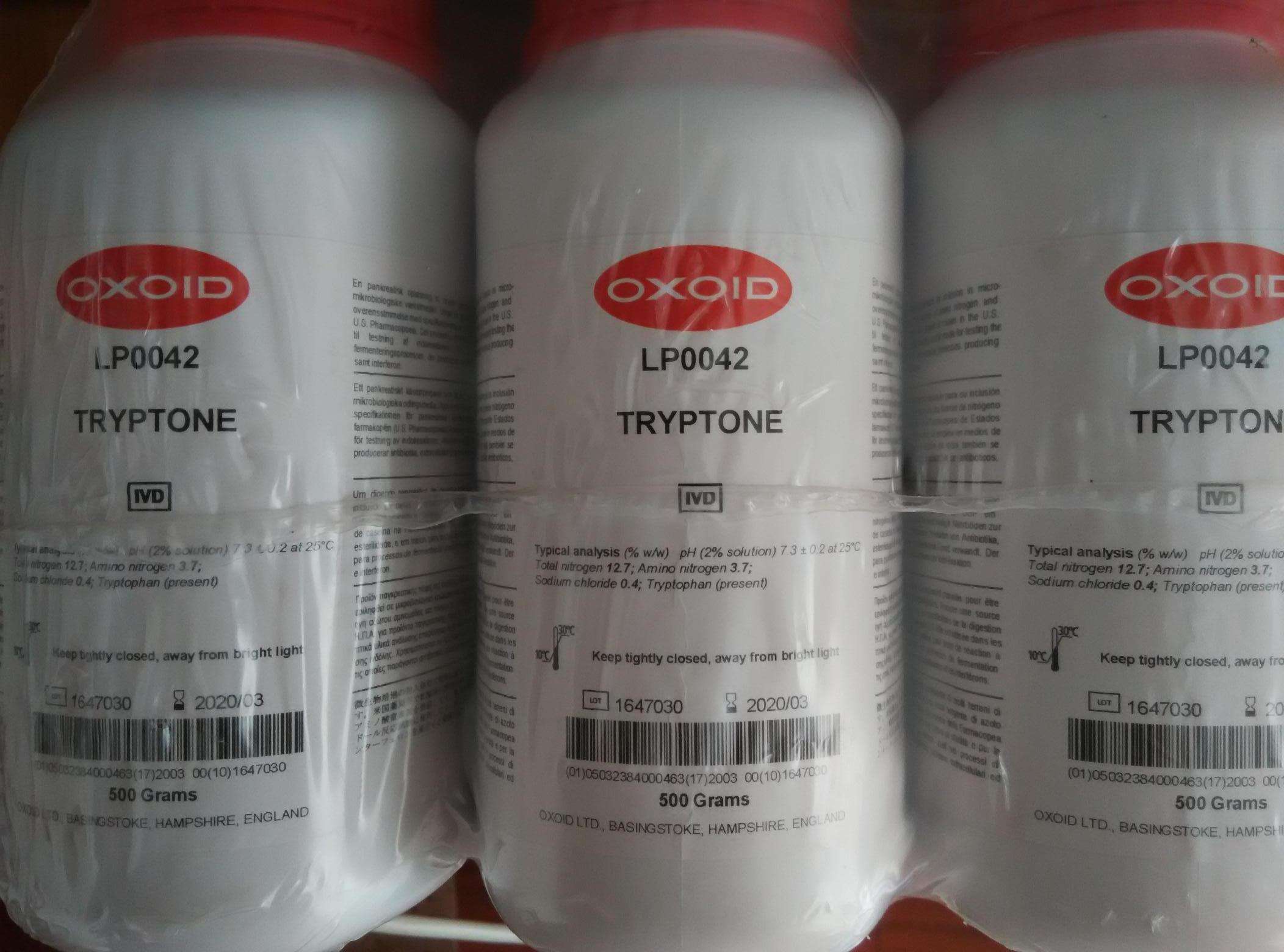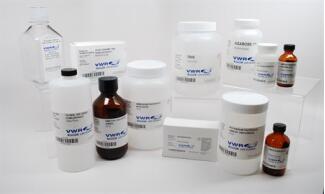L-苹果酸检测试剂盒
英文名:L-Malic Acid Assay Kit (Manual Format)
货号:K-LMAL-58A
规格:58 assays per kit
L-Malic Acid (Regular) Assay Kit, for the specific assay of L-malic acid (L-malate) in beverages and food products.
Manual format UV-method for the determination of L-Malic Acid in foodstuffs, beverages and other materials
Principle:
(L-malate dehydrogenase)
(1) L-Malic acid + NAD+ ↔ oxaloacetate + NADH + H+
(glutamate-oxaloacetate transaminase)
(2) Oxaloacetate + L-glutamate → L-aspartate + 2-oxoglutarate
Kit size: (K-LMALR)
58 assays (manual) / 580 (microplate) or
(K-LMALL)
116 assays (manual) / 1160 (microplate)
Method: Spectrophotometric at 340 nm
Reaction time: ~ 3 min
Detection limit: 0.25 mg/L
Application examples:
Wine, beer, fruit juices, soft drinks, candies, fruit and vegetables,
bread, cosmetics, pharmaceuticals and other materials (e.g. biological
cultures, samples, etc.)
Method recognition:
Methods based on this principle have been accepted by AOAC, EEC,
EN, NF, NEN, DIN, GOST, OIV, IFU, AIJN and MEBAK
Advantages
- PVP incorporated to prevent tannin inhibition
- Both enzymes supplied as stable suspensions
- Very competitive price (cost per test)
- All reagents stable for > 2 years after preparation
- Very rapid reaction (~ 3 min)
- Mega-Calc™ software tool is available from our website for hassle-free raw data processing
- Standard included
- Extended cofactors stability
- Suitable for manual and microplate format
Q1. What is the difference between K-LMAL-58A / 116A, K-LMALAF, K-LMALMQ and K-LMALQR?
Megazyme produces 4 L-malic acid test kits:
K-LMAL-58A / 116A: UV method, automated format for use with auto-analysers.
K-LMALAF: UV method, manual format for use with spectrophotometers.
K-LMALMQ: Colourimetric method, manual format for use with hand held colorimeter.
K-LMALQR: UV method, liquid ready reagents automated format for use with auto-analysers.
Q2. Should the pH of the sample be adjusted even for samples in acidic media?
The pH of the assay solution after the sample is added should be the same as that of the assay buffer that is supplied with the kit.
Low sample volumes (e.g. 0.1 mL) are not likely to affect the pH of the assay solution and therefore may not require pH adjustment.
Samples above 0.1 mL are more likely to affect the pH of the assay solution and therefore the pH of these samples should be adjusted as described in the data booklet, prior to addition to the assay.
Q3. Sometimes a negative absorbance change is obtained for the blank samples, is this normal? Should the real value (negative absorbance change) or “0” be used in the calculation of results?
Sometimes the addition of the last assay component can cause a small negative absorbance change in the blank samples due to a dilution effect and in such cases it is recommended that the real absorbance values be used in the calculation of results.
Q4. There is an issue with the performance of the kit; the results are not as expected.
If you suspect that the Megazyme test kit is not performing as expected such that expected results are not obtained please do the following:
- Ensure that you have tested the standard sample that is supplied with the Megazyme test kit.
- Send the results of the kit standard, blank samples and the results obtained for your sample, in the relevant MegaCalc spreadsheet (if available) to Megazyme (cs@megazyme.com). Where available the relevant MegaCalc spreadsheet can be downloaded from where the product appears on the Megazyme website.
- State the kit lot number being used (this is found on the outside of the kit box).
- State which assay format was used (refer to the relevant page in the kit booklet if necessary).
- State exact details of any modifications to the standard procedure that is provided by Megazyme.
- State the sample type and describe the sample preparation steps if applicable.
Q5. Which L-Malic Acid Kit is recommended for a 96-well microplate format?
Auto-analysers use ~ 0.315 mL reaction volumes and pathlengths between 4-8 mm which is similar to a standard 96-well microplate where a 0.315 mL reaction volume would give a pathlength of ~ 6-7 mm. Therefore, K-LMALAF can be used directly in a 96-well microplate format with minimal assay optimisation.
If preferred, K-LMAL-58A / 116A may also be easily converted for use in a 96-well microplate format. Basically, the assay volumes for the cuvette format must be reduced approximately 10-fold for use in a 96-well microplate. However, some assay optimisation may be required (e.g. increased enzyme concentration etc.) and unlike the cuvette which has a set pathlength of 1 cm, the pathlength in the microplate is dependent upon the volume of liquid in the well.
Therefore to enable the calculation of the amount of analyte in the samples from tests performed in the microplate format one of the following must be done:
- The easiest method is to use a microplate reader that has a pathlength conversion capability (i.e. the microplate reader can detect the pathlength of each well and convert the individual readings to a 1 cm pathlength). This will allow values to be calculated using the MegaCalc calculation software which can be found where the product is located on the Megazyme website.
- Perform a standard curve of the analyte on each microplate that contains test samples and calculate the result of the test samples from the calibration curve (concentration of analyte versus absorbance).
- Perform a standard curve of the analyte in both the cuvette format (i.e. with a 1 cm pathlength) and the 96-well microplate format and use these results to obtain a mean conversion factor between the cuvette values and the microplate values.
L-Malic Acid Kit Recommendation For Microplate Format:
Either K-LMAL-58A / 116A or K-LMALAF is recommended for use in a 96-well microplate format and the main advantages / disadvantages are described below:
K-LMAL-58A / 116A:
The assay volumes of this kit should be reduced by 10-fold for use in a 96-well microplate format (some assay optimisation may be required, e.g. increased enzyme concentration etc.).
The calculation of results is achieved as outlined above in either of points 1, 2 or 3.
The main advantage here is that if this kit is used with a microplate reader that has a pathlength conversion capability, or if results are converted as outlined above in point 3, then this enables easy calculation of results using the K-LMAL-58A / 116A MegaCalc application (available on the Megazyme website where the product is located).
K-LMALAF:
This kit is designed for use in an auto-analyser and therefore can be used without any modification to assay volumes directly in a 96-well microplate format.
This kit has less reagent additions than K-LMAL-58A / 116A.
K-LMALAF does not have a MegaCalc application available to enable easy results calculation which therefore must be achieved as outlined above in either of points 2 or 3.
Q6. Do samples require any specific sample preparation prior to testing with the kits?
The sample preparation is sample dependent, some samples may be tested directly in the assay or after appropriate dilution, however, some samples may require further sample preparation prior to testing. The following are example of sample preparation methods:
(a) Liquid samples: clear, slightly coloured and approximately neutral, liquid samples can be used directly in the assay.
(b) Acidic samples: if > 0.1 mL of an acidic sample is to be used undiluted (such as wine or fruit juice), the pH of the solution should be increased to approx. 9.0 using 2 M NaOH, and the solution incubated at room temperature for 30 min.
(c) Carbon dioxide: samples containing significant quantities of carbon dioxide, such as beer, should be degassed by increasing the pH to approx. 9.0 with 2 M NaOH and gentle stirring, or by stirring with a glass rod.
(d) Coloured samples: an additional sample blank, i.e. sample with no L-MDH, may be necessary in the case of coloured samples.
(e) Strongly coloured samples: if used undiluted, strongly coloured samples should be treated by the addition of 0.2 g of PVPP/10 mL of sample. Shake the tube vigorously for 5 min and then filter through Whatman No. 1 filter paper.
(f) Solid samples: homogenise or crush solid samples in distilled water and filter if necessary.
(g) Samples containing fat: extract such samples with hot water at a temperature above the melting point of the fat, e.g. in a 100 mL volumetric flask. Adjust to room temperature and fill the volumetric flask to the mark with distilled water. Store on ice or in a refrigerator for 15-30 min and then filter. Discard the first few mL of filtrate, and use the clear supernatant (which may be slightly opalescent) for assay. Alternatively, clarify with Carrez reagents.
(h) Samples containing protein: deproteinise samples containing protein by adding an equal volume of ice-cold 1 M perchloric acid with mixing. Centrifuge at 1,500 g for 10 min and neutralise the supernatant with 1 M KOH. Alternatively use Carrez reagents.
Q7. Can you explain, step by step, how to follow the method and perform the kit assay?
For users who are not familiar with how to use the Megazyme tests kits then it is recommended that they follow this example, e.g. D-Fructose/D-Glucose Assay kit K-FRUGL (http://secure.megazyme.com/D-Fructose-D-Glucose-Assay-Kit):
1. The kit components are listed on pages 2-3 of the kit booklet.
2. Prepare the kit reagents as described on page 3.
3. For separate measurements of glucose and fructose follow procedure A on page 4.
4. Pipette the volumes listed for water, sample, solution 1 and solution 2 into 3 mL, 1 cm pathlength cuvettes. Duplicate sample assays and duplicate blanks are recommended. Mix the contents of each cuvette by inversion (seal the cuvette using parafilm or a plastic cuvette cap – do not use a finger) then after ~3 min record the first absorbance reading of each cuvette at 340 nm (this is reading A1).
5. Then add suspension 3 and mix the contents of each cuvette by inversion. Incubate for 5 minutes then record the absorbance reading of each cuvette at 340 nm (this is reading A2). NB. It is essential that the reaction is compete. To assess this, record the absorbances at ~ 2 minute intervals and until the absorbance plateaus. A stable absorbance indicates that the reaction is complete. If the absorbance continues to increase then continue to record absorbances until it plateaus and only then record absorbance reading A2.
6. Then add suspension 4 and mix the contents of each cuvette by inversion. Incubate for 5 minutes then take absorbance reading of each cuvette at 340 nm (this is reading A3). NB. As above, assess that the reaction has completed by take subsequent readings at ~2 min intervals.
7. For simple, automated results analysis, input the absorbance readings (A1, A2, A3) for samples and blanks into the K-FRUGL MegaCalc.
To ensure that the assay is working, and being performed correctly it is recommend that the test is performed using the standard sample that is provided with the kit and to obtain the expected values before proceeding to test real samples.
It is recommend that new users also watch this video which highlights how to perform the assays.
Many of the other Megazyme test kits follow a similar format.
Q8. The pH of my sample is low (pH ~ 3.0), do I need to adjust this before I use the sample in the kit assay?
The final pH of the kit assay after the sample is added should not change from what it should be (as stated in the kit for the assay buffer). If it does change then the sample will require pH adjustment. In most cases the sample volume being used is low relative to the final assay volume and in this case the pH of the kit assay is unlikely to be affected.










